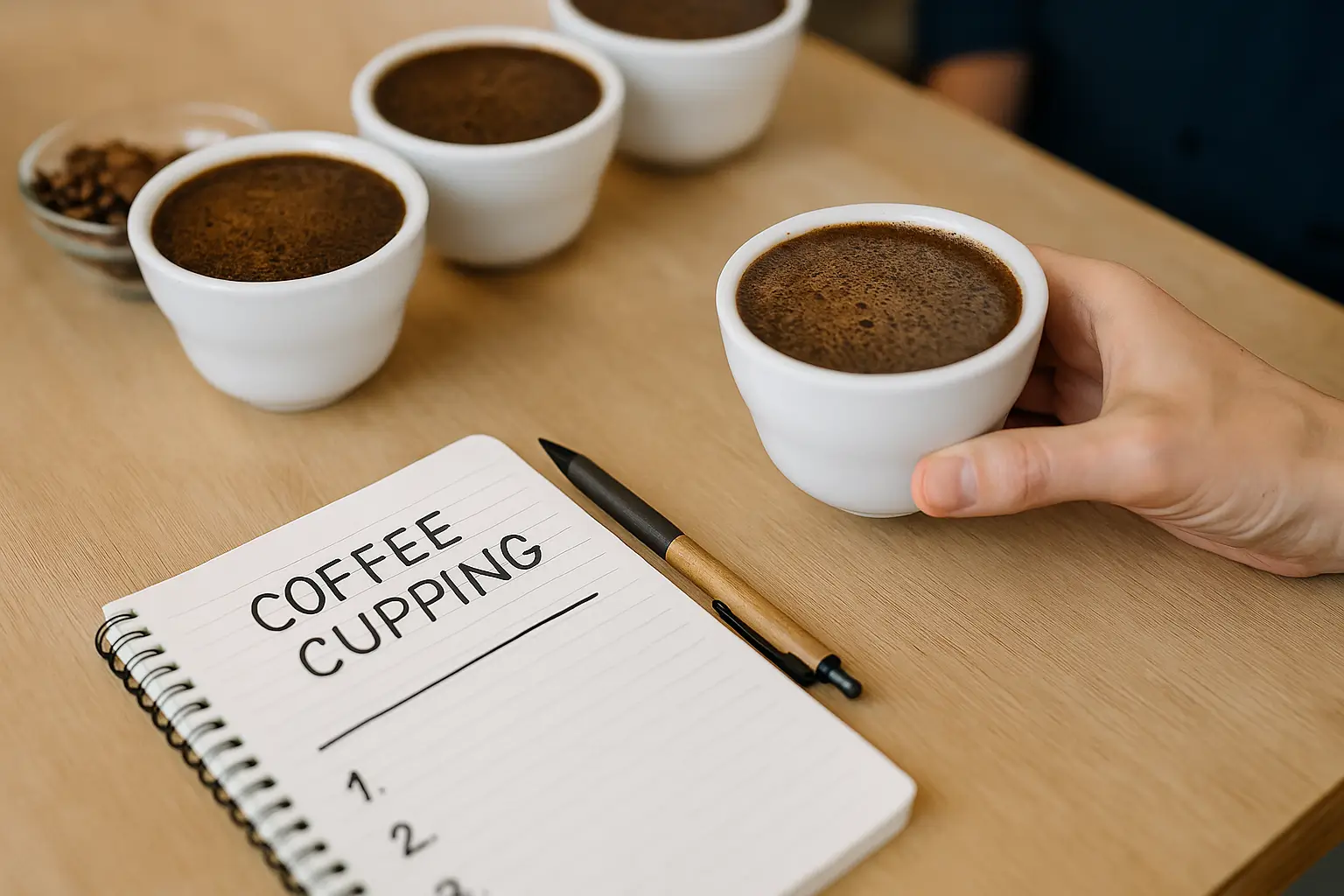Cupping is the standard method used by coffee professionals to evaluate beans for aroma, flavor, and overall quality. But you don’t need to be a barista or Q-grader to try it. With a few tools and a bit of guidance, anyone can learn to taste coffee like a pro. This beginner-friendly guide will walk you through the cupping process step by step.
What Is Coffee Cupping?
Coffee cupping is a sensory evaluation technique that involves smelling and tasting brewed coffee in a controlled and consistent way. It helps identify flavor profiles, body, acidity, and defects in beans.
Why Try Cupping?
- Explore flavor nuances
- Compare different beans or roasts
- Improve your coffee palate
- Learn which coffees suit your taste best
What You’ll Need
- Whole coffee beans (2–4 types for comparison)
- Burr grinder (for even medium-coarse grind)
- Cupping bowls or wide-mouth mugs (same size preferred)
- Cupping spoons or soup spoons
- Digital scale and timer
- Kettle with hot water (195°F–205°F / 90°C–96°C)
- Clean water for rinsing
- Tasting note sheets or notebook
Preparation: Step-by-Step
1. Measure and Grind
- Use 8–10 grams of coffee per cup
- Grind to a medium-coarse consistency (similar to sea salt)
- Place each coffee in a labeled cup
2. Smell the Dry Grounds
- Smell each cup before adding water
- Note any initial aromas: chocolate, fruit, nuts, floral, etc.
3. Pour Hot Water
- Start your timer as you pour
- Pour water (around 150–200 ml) evenly over the grounds
- Let steep for 4 minutes
4. Break the Crust
- A crust will form on top of each cup
- After 4 minutes, use a spoon to gently break the crust while smelling the aroma
- Rinse your spoon between cups
5. Skim and Cool
- Skim off remaining grounds with two spoons
- Let the coffee cool for a few minutes—flavors are more distinct at lower temperatures
6. Taste the Coffee
- Use a clean spoon to slurp a small amount of coffee (yes, slurp—it aerates the liquid across your palate)
- Take note of:
- Acidity: Brightness or tanginess (not sourness)
- Body: Texture or weight on your tongue
- Flavor: Notes like citrus, chocolate, floral, spicy
- Aftertaste: Lingering flavors
Tips for a Better Cupping Experience
- Use identical cups and water volume for consistency
- Avoid perfumes, scented lotions, or flavored lip balm
- Taste in a neutral, well-lit environment
- Keep a cupping journal with your observations
Sample Flavor Notes You Might Find
| Flavor Category | Examples |
|---|---|
| Fruity | Berries, apple, citrus, stone fruit |
| Nutty | Almond, peanut, hazelnut |
| Sweet | Caramel, honey, brown sugar |
| Spicy | Cinnamon, clove, black pepper |
| Earthy | Tobacco, leather, wood |
| Floral | Jasmine, rose, chamomile |
Why Professionals Use Cupping
- Roasters: To evaluate roast profiles and adjust processes
- Buyers: To assess quality before purchasing beans
- Baristas: To train taste memory and recommend coffees
Final Sip
Cupping may seem technical at first, but it’s really about discovering what you enjoy in a cup of coffee. By practicing regularly and paying attention to your senses, you’ll begin to pick up subtle flavors and deepen your appreciation for each bean.
So gather some beans, warm up your spoon, and get ready to slurp your way to becoming a true coffee taster!
